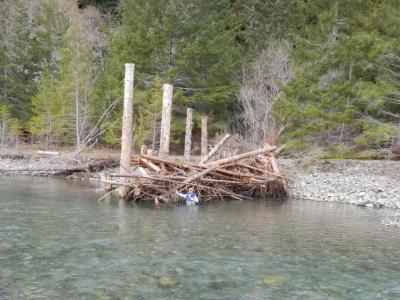Restoring to Stage Zero, Recent Innovations in Restoration Science: Reports from the Field
Session Coordinators:
Brian Cluer, NOAA Fisheries
Michael Pollock, NOAA Fisheries
During the first decade of the new millennium, conventional thinking that the single-thread, meandering channel represented the ‘natural’ course for an alluvial stream, and that the return period for a flood large enough to inundate the floodplain was between 1.5 and 3 years, was increasingly questioned. During the second decade of the new millennium, river restoration theory and practice has started to apply new thinking based on the principles that, prior to human modification, most alluvial streams had channels that were multi-threaded and that they overflowed on to their floodplains several times a year. Recognizing this, the Stream Evolution Model (SEM; Cluer and Thorne 2013) extended existing Channel Evolution Models (Schumm et al. 1984, Simon and Hupp, 1986) to include multi-thread channels, highly connected to their floodplains as precursor (Stage 0) and successor (Stage 8) forms, genetically related to the single-thread, incised channels featured in Stages 1 to 7. This expanded continuum of alluvial channel patterns was linked to published habitat and ecosystem benefits using 26 common biological and hydrophysical attributes. The analysis of the links between physical processes, stream form, and ecosystem services revealed clear distinctions between streams that are fully-connected with their floodplains (i.e. in Stages 0 and 8) and those that have become disconnected due to channelization (Stage 2) and/or incision (Stages 3 to 7), spotlighting the poor performance of >1 yr RI bankfull channels. Insights gained by practitioners who have applied the SEM in the contexts of stream problem assessment and restoration design has led to a number projects aimed at restoring multi-thread or anastomosed patterns (i.e. Stage 0) instead of single-thread meandering channels (i.e. Stage 1) in historic deposition zones.
This session will first set out the historic, geomorphic and biotic basis for restoring to Stage 0, and, second, will provide a platform for restoration practitioners to share their first-hand experiences of Stage 0 projects, from inception, through to design, construction and effectiveness monitoring. The sessions will feature consideration of the advantages and risks of restoring to Stage 0, focusing particularly on concerns expressed by some stakeholders and regulators, including issues such as fish passage, stranding risks, and provision of deep pools.

